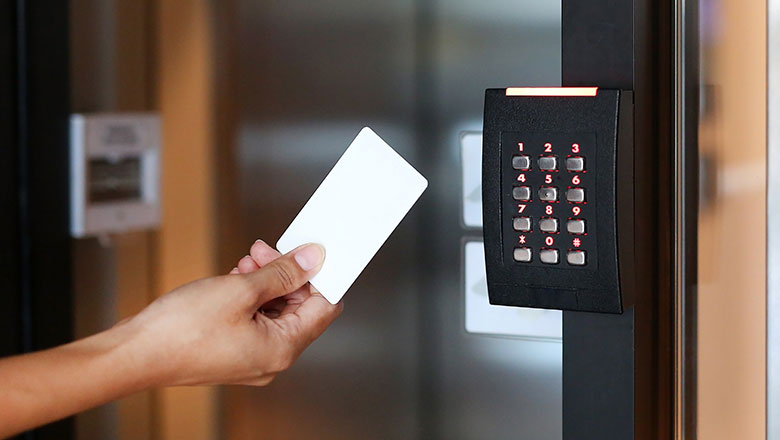Read our blog on how access technologies have evolved to prevent tailgating and piggybacking to gain unauthorised access.
Finally - A Stop to Cheating Access Control

Preventing tailgating and piggybacking, in other words misleading or outsmarting the system, is a problem most access control systems do not adequately address. Many organisations even resort to placing a security officer by the point of access to validate that the system is not being cheated and prevent unauthorised individuals gaining access.
It doesn’t need to be that way.
Technology has evolved to ensure that security no longer needs to physically monitor access points. This is irrespective of the access management solution that you use.
Therefore, the days of an officer stationed by an access turnstile should be behind us. Technology can now proactively alert in real time should a none authorised person attempt to gain access without presenting a valid access credential..
Surveillance platforms embedded with analytics will flag unusual activity for investigation or even count people as they pass.
However, if there are limitations to the surveillance product in situ, a simple addition to the access control platform (typically irrespective of the manufacturer used) will deliver what’s required.
An intelligent sensor located above and close to the access point can determine the amount of authorised credentials used and compare that to the number of people crossing an entry point.
It can also take pre-emptive action and deny access to a valid credential if there is someone else close to the door. This is an optional feature for high security applications where piggy backing could be of particular concern.
Conversely, if your access strategy determines that 2 or more people MUST be present when accessing an area, the sensor can be configured to only allow access if this criteria is met.
An intelligent sensor calculates the exact number of people transiting the detection area and triggers an alarm when on detecting situations such as tailgating or piggybacking.
Controlling access is the primary objective but the use of technology can expand further and be used to count people - whether it be:-
• Forward/Backwards counts
• Current number of people in the detection area
This means security are able to monitor occupancy levels in real time and take action if levels meet or exceed preset thresholds.
But the main benefit remains the real time alerts issued back to security when the access system is being compromised.
All without re-engineering the access control system itself.
It doesn’t need to be that way.
Technology has evolved to ensure that security no longer needs to physically monitor access points. This is irrespective of the access management solution that you use.
Therefore, the days of an officer stationed by an access turnstile should be behind us. Technology can now proactively alert in real time should a none authorised person attempt to gain access without presenting a valid access credential..
So how does it do it?
Surveillance platforms embedded with analytics will flag unusual activity for investigation or even count people as they pass.
However, if there are limitations to the surveillance product in situ, a simple addition to the access control platform (typically irrespective of the manufacturer used) will deliver what’s required.
An intelligent sensor located above and close to the access point can determine the amount of authorised credentials used and compare that to the number of people crossing an entry point.
It can also take pre-emptive action and deny access to a valid credential if there is someone else close to the door. This is an optional feature for high security applications where piggy backing could be of particular concern.
Conversely, if your access strategy determines that 2 or more people MUST be present when accessing an area, the sensor can be configured to only allow access if this criteria is met.
An intelligent sensor calculates the exact number of people transiting the detection area and triggers an alarm when on detecting situations such as tailgating or piggybacking.
Controlling access is the primary objective but the use of technology can expand further and be used to count people - whether it be:-
• Forward/Backwards counts
• Current number of people in the detection area
This means security are able to monitor occupancy levels in real time and take action if levels meet or exceed preset thresholds.
But the main benefit remains the real time alerts issued back to security when the access system is being compromised.
All without re-engineering the access control system itself.
